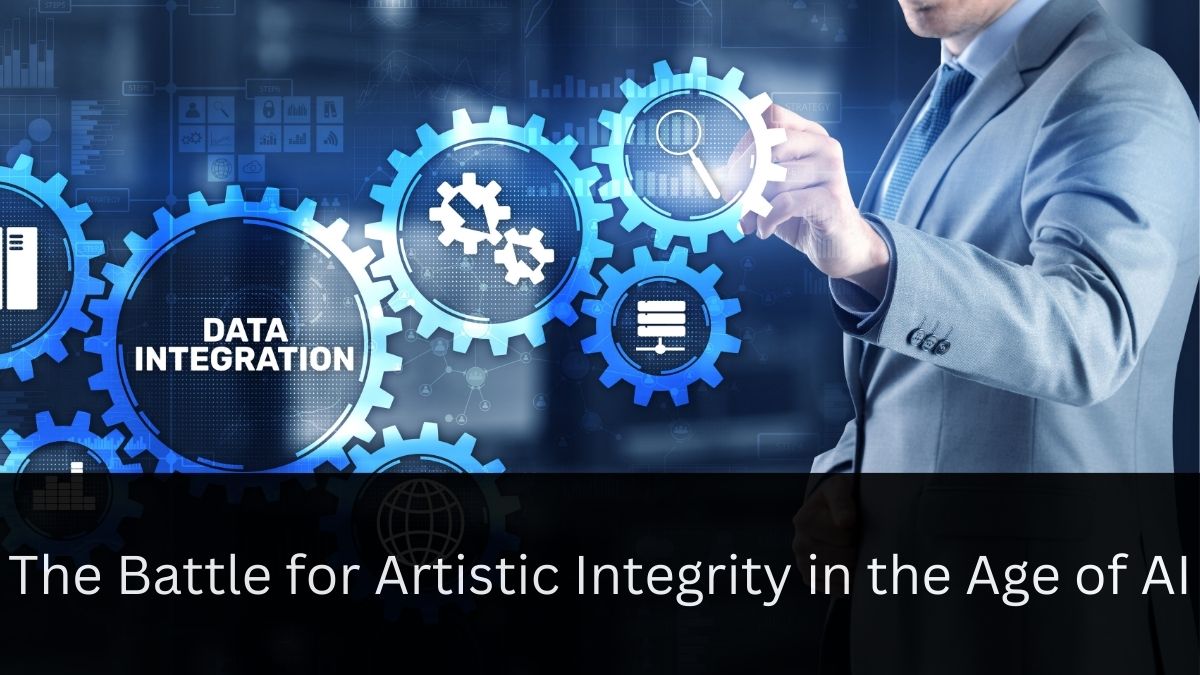AI
The Battle for Artistic Integrity in the Age of AI

In the ever-evolving landscape of digital art, a new conflict has emerged. Artists, once concerned primarily with honing their craft and finding their audience, now face an unexpected adversary: artificial intelligence. As AI-powered tools become increasingly adept at mimicking artistic styles, creators are scrambling to protect their unique visions from being replicated without consent. This struggle has given rise to innovative solutions, heated debates, and a fundamental reimagining of what it means to be an artist in the 21st century.
The Rise of Glaze: A Shield Against AI Mimicry
Enter Glaze, a tool developed by the aptly named Glaze Project. This ingenious software aims to safeguard artists’ work from unauthorized AI replication. By making subtle alterations to images, Glaze effectively bamboozles AI models, causing them to perceive something markedly different from the original artwork. It’s a clever trick, invisible to the human eye but glaringly obvious to machines.
As an art enthusiast who’s watched this technological arms race unfold, I find Glaze’s approach both fascinating and slightly unnerving. It’s a stark reminder of how quickly the digital landscape is changing, forcing artists to become part-time technologists just to protect their livelihoods.
How Glaze Works Its Magic
Glaze operates on a principle that’s almost poetic in its simplicity: it speaks to machines in their own language. By understanding the inner workings of AI models trained on human art, Glaze computes a set of minimal changes to artworks. These alterations are imperceptible to us but appear dramatically different to AI systems.
Imagine a masterful landscape painting. To our eyes, it remains unchanged after being processed by Glaze. But to an AI, it might suddenly resemble a abstract expressionist piece. It’s a digital sleight of hand that’s as clever as it is necessary in today’s world.
The Zurich Challenge: Cracks in the Armor
However, just as artists began embracing Glaze as a reliable shield, a team of researchers from Zurich, including Google DeepMind scientist Nicholas Carlini, claimed to have found vulnerabilities in its defenses. Their paper, published without peer review on Arxiv.org, sent shockwaves through the digital art community. It suggested that Glaze’s protections could be “easily bypassed,” potentially leaving artists exposed once again.
This revelation highlights the cat-and-mouse game that defines technological progress. No sooner is a solution found than someone finds a way around it. It’s a cycle that can be exhausting for artists who just want to create without constantly looking over their digital shoulders.
The Glaze Project Responds
To their credit, the team behind Glaze didn’t take this challenge lying down. They swiftly released an update, which, while not completely addressing the vulnerabilities, made exploiting them “much harder.” This rapid response underscores the dedication of those working to protect artists’ rights in the digital age.
But the debate didn’t end there. The Zurich team claimed that the update “missed the mark,” potentially giving users a “false sense of security.” It’s a sobering reminder that in the world of digital security, there are rarely perfect solutions – only ongoing battles.
The Great Debate: To Post or Not to Post?
This back-and-forth has sparked a larger conversation within the art community. On one side, we have those who argue for the continued use of tools like Glaze, viewing them as essential stopgaps until more robust legal protections can be put in place. On the other, some advocate for a more drastic approach: ceasing to post artwork online altogether if artists wish to maintain complete control over their styles.
As someone who’s spent countless hours scrolling through online galleries and artist portfolios, the idea of a world where artists feel compelled to hide their work saddens me deeply. Yet, I can’t help but sympathize with their concerns. The thought of an AI system effortlessly replicating years of hard-won skill and style is undeniably unsettling.
The Online Art Dilemma
Recent data from Statista paints a clear picture of why this debate is so crucial. Online art sales in 2023 reached a staggering $12 billion, nearly doubling the figures from 2019. With almost a fifth of all global art sales happening online, artists can’t simply opt out of digital platforms without potentially crippling their careers.
This puts creators in an impossible position. They must choose between visibility and vulnerability, between reaching their audience and protecting their artistic integrity. It’s a modern dilemma that our predecessors could scarcely have imagined.
Beyond Glaze: The Wider Arsenal
While Glaze has garnered significant attention, it’s not the only tool in the fight against AI mimicry. Other solutions like Mist and AntiDreamBooth have also emerged, each offering their own approach to safeguarding artistic styles. This proliferation of protective tools speaks to the urgency of the issue and the creativity of those working to address it.
One particularly intriguing development is Nightshade, another creation from The Glaze Project. Rather than simply hiding art from AI, Nightshade takes a more aggressive stance. It transforms images into “poison” samples that can actually scramble AI models, causing them to learn unpredictable behaviors. It’s a digital version of fighting fire with fire, and it’s stirred up its own share of controversy.
The Road Ahead: Uncertainty and Hope
As we look to the future, it’s clear that the relationship between human artists and AI will continue to evolve in unpredictable ways. The challenges are immense, but so too is the potential for innovation and creativity.
For artists navigating this new landscape, staying informed and adaptable will be key. Tools like Glaze may not be perfect, but they represent an important step in asserting control over one’s artistic output. At the same time, it’s crucial to remain aware of the limitations of such tools and to advocate for stronger legal protections.
As for art lovers and consumers, we have a role to play too. By supporting artists directly, seeking out original works, and being mindful of the sources of the art we enjoy, we can help ensure that human creativity continues to thrive in the age of AI.
In conclusion, the battle for artistic integrity in the digital age is far from over. It’s a complex, multifaceted issue that touches on questions of creativity, technology, and what it means to be human in an increasingly automated world. As we move forward, one thing is certain: the art world will never be the same again. But with vigilance, innovation, and a commitment to supporting human creativity, we can help shape a future where both human and artificial intelligence can coexist and even collaborate in the realm of art.
